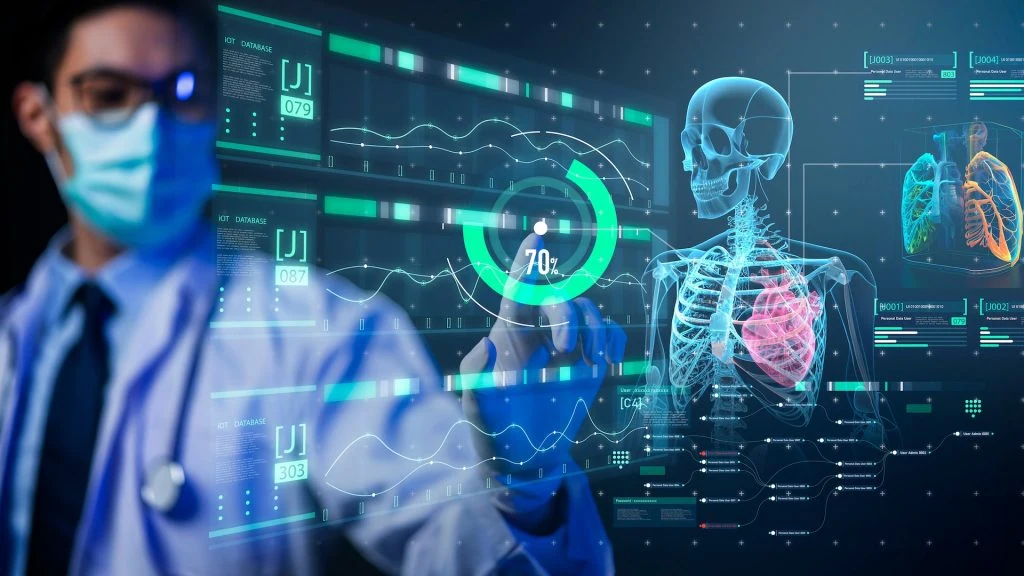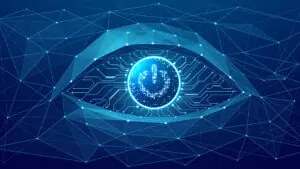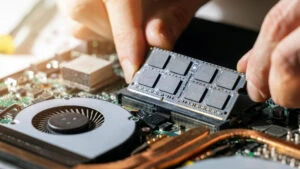From AI-controlled diagnoses to IoT-based remote patient monitoring: digital solutions are making their way into the healthcare sector and reducing the workload on employees. An intelligent infrastructure and high-performance networks are the basis for this.
There is an alarming shortage of skilled workers in Germany, which particularly affects medical staff. This shortage is exacerbated by demographic change, which will lead to an increase in the population requiring care in the near future. At the same time, the number of trainees in nursing professions is on a downward trend. The resulting challenge manifests itself as an acute nursing shortage, which affects patient care and increases the workload for existing nursing staff.
In order to meet these ongoing challenges in the long term, urgent measures are needed to make nursing professions more attractive and to relieve the pressure on existing specialist staff. One promising approach is the far-reaching digitalization of care processes, which goes beyond mere data processing. Hospitals have been using enterprise resource planning (ERP) systems, hospital information systems and integrated imaging technologies to increase the efficiency and quality of patient care for some time now.
AI and IoT improve medical processes
Nevertheless, developers are actively striving to make state-of-the-art technologies such as the Internet of Things (IoT) and artificial intelligence (AI) available to medical and nursing staff. However, innovation is not focused on fully automated solutions, but rather on low-threshold digital solutions that can be seamlessly integrated into everyday working life and relieve staff of time-consuming routine tasks.
Modern technologies such as AI-driven diagnostics and IoT-based remote patient monitoring have enormous potential to significantly improve the efficiency and quality of patient care. The use of IoT devices, for example, ensures continuous monitoring of patient parameters such as heart rate, blood pressure and oxygen saturation, which enables early detection of complications and shortens the response time of medical staff. IoT sensors can also save time and effort in asset management, i.e. the digital administration of objects: Medical devices no longer have to be laboriously searched for or inventoried.
The use of AI systems, on the other hand, allows diagnoses to be made more accurately and quickly as they are able to analyze large amounts of medical data and identify patterns that may be too complex for the human eye. For example, AI algorithms can interpret X-rays, CT scans and MRI images with high accuracy and identify potential abnormalities or signs of disease. These precise diagnoses enable doctors to make informed decisions and optimize treatment planning and delivery based on the patient’s individual needs and health status. By detecting diseases or health problems at an early stage, appropriate treatment measures can be initiated more quickly – improving the effectiveness of therapy and reducing potential complications.
In addition, AI systems can help to develop personalized treatment approaches by taking into account patients’ individual medical histories, genetic information and lifestyle factors. This enables customized therapy tailored to the specific needs and preferences of each individual patient. Overall, the use of AI systems helps to improve efficiency, accuracy and patient satisfaction in the healthcare sector.
Exploring new medical territory
Thanks to AI, many surgeons can already count on the support of virtual surgical assistants during surgical procedures. These are AI-based systems that analyze real-time data and provide valuable information live. They enable the precise planning and execution of operations by creating three-dimensional models based on patient data and pre-operative scans. These assistants provide real-time feedback, detect deviations from the planned procedure and suggest alternative approaches, increasing the safety and success of interventions. They also improve the education and training of junior surgeons through simulation-based exercises.
Another emerging discipline is digital pathology, which is also based on AI. It enables faster and more precise diagnosis of diseases such as cancer through the digitization of tissue samples and automated analyses. AI-supported programs analyze histological images, identify tissue patterns and detect anomalies, which improves the efficiency and accuracy of diagnoses. Digital pathology also promotes collaboration between pathologists and other healthcare professionals, as digital images can be easily shared and reviewed.
Stable networks are the enablers
The following applies to all these small and large digital helpers: an intelligent infrastructure and high-performance networks are the basis. On the one hand, fast and stable internet connections are necessary to transfer large amounts of data in real time. This is crucial for continuously monitoring patient parameters and responding quickly to any problems that arise. IoT devices that monitor vital signs such as heart rate, blood pressure and oxygen saturation must be able to communicate reliably and without interruption with central systems.
Powerful servers and data storage solutions are also required to process and store the huge volumes of medical data securely and efficiently. AI algorithms require considerable computing capacity to perform complex analyses and make precise diagnoses. Only an intelligent infrastructure can ensure that these computing requirements can be met without any problems.
In order to protect sensitive healthcare data, well thought-out network security is of course also essential. The networking of medical devices and systems increases the risk of cyber attacks – hospitals and healthcare facilities must ensure that their networks are protected by modern security protocols and regular updates.
Finally, an intelligent infrastructure supports the seamless integration of different digital tools. It enables smooth interoperability between different applications and platforms, which promotes collaboration and the exchange of information between medical professionals. For example, digital pathology systems and virtual surgical assistants can work together efficiently to optimize the diagnosis and treatment of patients.
Of course, this combination of strong personnel, high-performance infrastructure and innovative technology cannot compensate for the effects of the shortage of specialists and the impending supply bottlenecks. But it can make a decisive contribution to ensuring the quality of patient care and making the healthcare system more resilient to the challenges of the future.

















